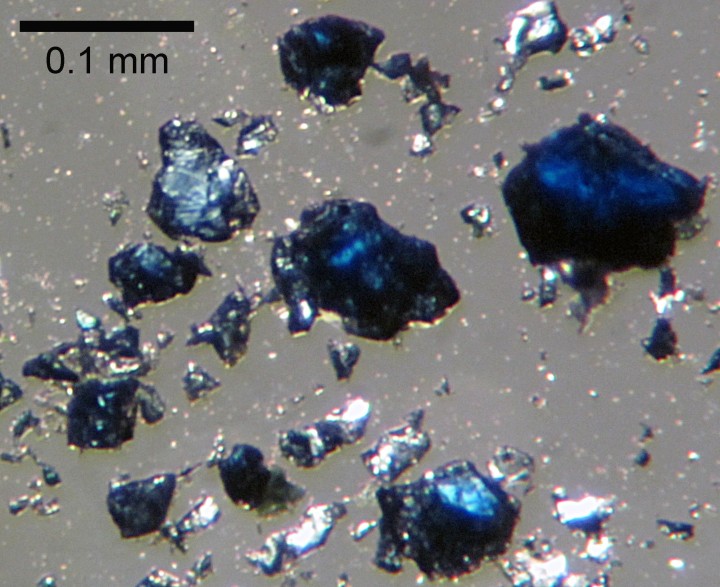Earth's Rocks Contain a Hidden Ocean's Worth of Water
WASHINGTON — If you want to find Earth's vast reservoirs of water, you may have to look beyond the obvious places like the oceans and polar ice caps.
Scientists say massive amounts of water appear to exist deep beneath the planet's surface, trapped in a rocky layer of the mantle at depths between 250 and 410 miles (410 to 660 kilometers).
 STEVE JACOBSEN / NORTHWESTERN U.
STEVE JACOBSEN / NORTHWESTERN U.
But do not expect to quench your thirst down there. The water is not liquid — or any other familiar form like ice or vapor. It is locked inside the molecular structure of minerals called ringwoodite and wadsleyite in mantle rock that possesses the remarkable ability to absorb water like a sponge.
"It may equal or perhaps be larger than the amount of water in the oceans," Northwestern University geophysicist Steve Jacobsen said Friday in a telephone interview. "It alters our thoughts about the composition of the Earth."
"It's no longer liquid water that we're talking about at these great depths. The weight of hundreds of kilometers of rock and very high temperatures above 1,000 degrees Celsius (1,832 Fahrenheit) break down water into its components. And it's not accessible. It's not a resource in any way," Jacobsen added.
Jacobsen said water is taken down into the mantle with minerals during the process known as plate tectonics — the slow, inexorable movement of the colossal rock slabs that make up the Earth's surface.
When the minerals containing this water reach certain depths, they break down in a process called dehydration and release the water to form magmas. Such "dehydration melting" is common in the shallow mantle and forms the source for magmas in many volcanoes.
In a study published in the journal Science, the researchers present evidence that this is also occurring much deeper in the mantle, in a region called the "transition zone" between Earth's upper and lower mantle.
The study combined lab experiments involving synthetic ringwoodite being exposed to conditions simulating the heat and pressure of the transition zone, and observations of events in this zone, based on seismic data from a network of more than 2,000 seismometers across the United States.
A team led by Jacobsen and University of New Mexico seismologist Brandon Schmandt identified deep pockets of magma, a likely signature of the presence of water at those depths.
— Will Dunham, Reuters
科學家新發現:地球內部潛藏巨大海洋
編譯中心 2014年06月13日 18:243577 點擊數




沒有留言:
張貼留言